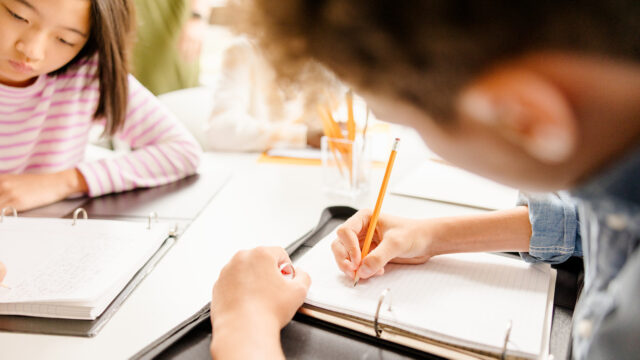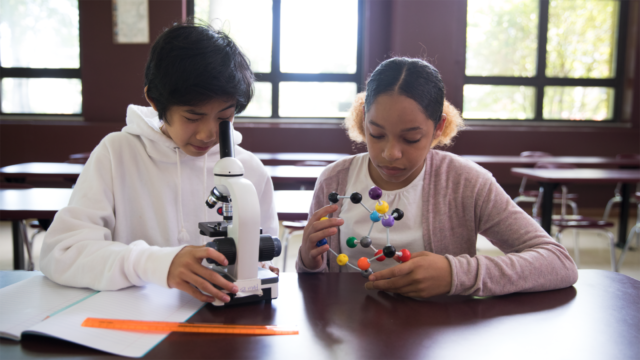
What can you do in 90 seconds? Learn about science phenomena! Watch these quick and easy science experiments you can do with your students, in and out of the classroom. With a few household materials and a little time, your students can complete hands-on activities, see science in action, and learn about important phenomena in their everyday lives.
Quick Science Experiments for Kids
Watch these free 90-second episodes and use the instructions to create your own science experiments in the classroom or at home.
Milk Soap Rainbow | Grades K–12
Explain It: How does soap change the properties of milk?
Time: 15 minutes
Using milk, food coloring, and dish soap, students experiment with surface tension and chemical change. This lesson is a great way to teach states of matter, properties of matter, attractive forces, and surface tension.
Water Sketching | Grades K–12
Explain It: How can you draw on the surface of a liquid?
Time: 15–20 minutes
Using dry-erase markers, glass, and water, students experiment with the properties of cohesion and adhesion. This quick, hands-on science experiment is a great way for students to explore the properties of matter and, for older grades, capillary action.
Static Disco | Grades K–12
Explain It: Can you control electricity?
Time: 30–45 minutes
Working in small groups, students will generate and experiment with static electricity and aluminum-wrapped spheres. This hands-on science activity is an excellent way for students to explore electric fields and forces.
Elephant Foam | Grades 3–12
Explain It: How can a few small reactants create a giant mess?
Time: 45 minutes
Using hydrogen peroxide, liquid dish detergent, active yeast, and warm water, students will work in small groups to model a chemical change and a catalyst. This lesson is a great way to teach chemical and physical reactions, solution types, and conservation of mass.
Storm Tank | Grades 3–12
Explain It: How do currents form?
Time: 45 minutes
This hands-on science experiment will allow students to explain the creation of a current by modeling one using food coloring and a fish tank. This lesson is an excellent way for students to explore weather patterns, ocean currents, and tectonic theory.
Magnetic Slime | Grades 3–12
Explain It: How can a liquid be affected by a magnet?
Time: 45 minutes
Working in small groups or alone, students will create magnetic slime and use it to discuss the properties of matter and chemical changes. This science lesson is a great way for students to explore magnetism, electricity, and forces.
***
Learn more about HMH's science programs, designed to encourage student-directed learning and open students' minds to a world of scientific thinking.
This blog, originally published in 2020, has been updated for 2021.




















